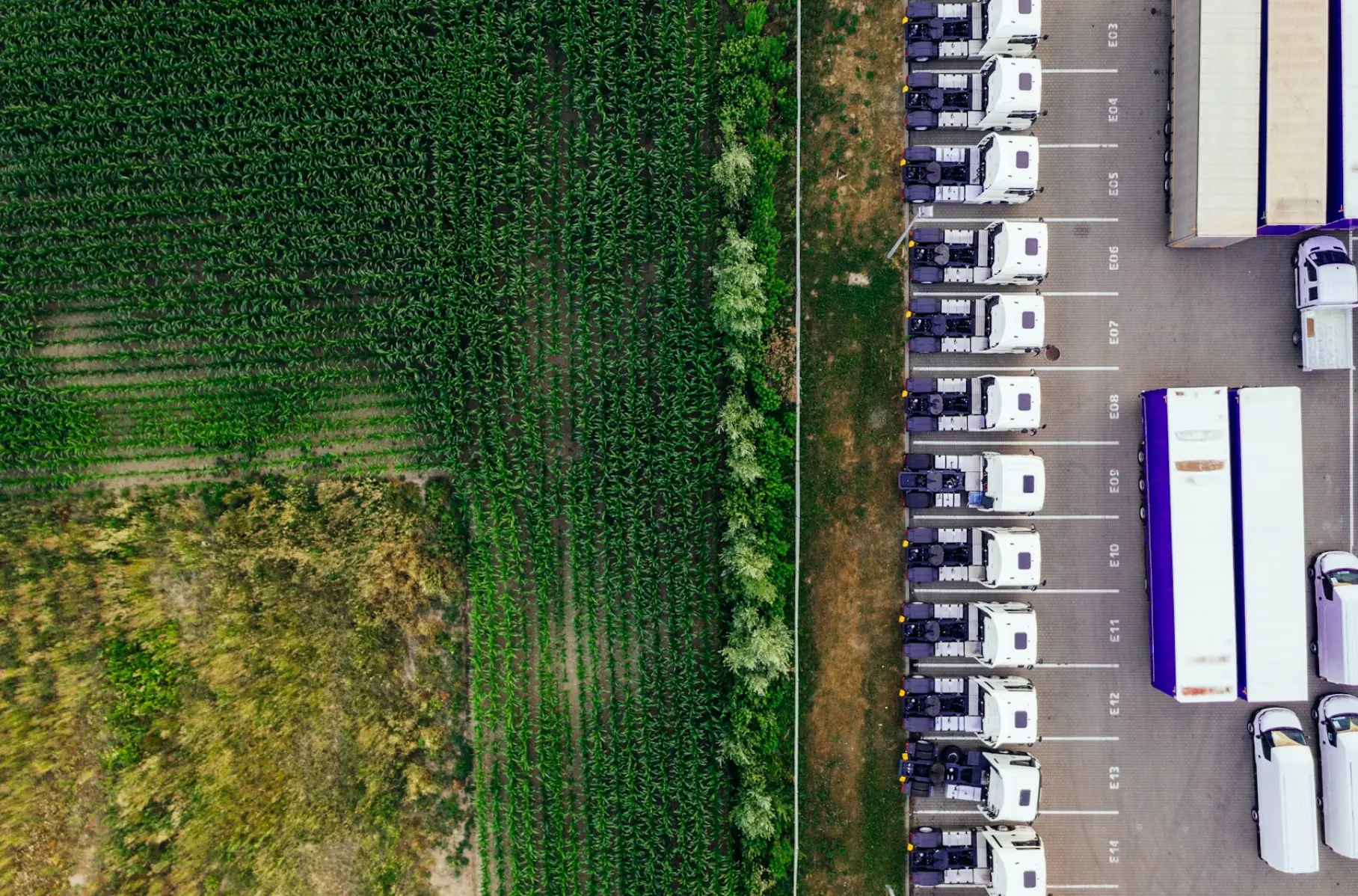AI route optimization is changing the game for logistics operations, making it easier to move goods through complex supply chain networks. Unlike traditional methods that rely on fixed rules and manual planning, this advanced technology uses machine learning algorithms and real-time data processing to find the best routes for vehicles, drivers, and assets.
With traditional routing methods, you're constantly dealing with challenges like traffic changes, weather issues, and last-minute delivery adjustments that can throw off even the most carefully planned routes.
But with artificial intelligence logistics solutions, you can overcome these obstacles. This innovative approach analyzes large amounts of data in an instant, allowing for smarter decision-making and more efficient operations.
Smart routing technology offers significant benefits across key areas:
Cost savings: By optimizing fuel usage and reducing wear on vehicles
Faster deliveries: With the ability to make on-the-fly changes to routes
Happier customers: Through accurate delivery time estimates
Streamlined operations: Thanks to automated decision-making processes
When combined with robust yard management systems, this technology becomes even more powerful. Route optimization starts at the loading dock and continues throughout the entire distribution network, maximizing efficiency every step of the way.
Understanding How AI Optimizes Routes
AI-driven logistics systems rely on machine learning routing as their foundation. These systems use complex algorithms to analyze historical data, traffic information, and delivery limitations continuously.
How AI Determines the Best Routes
To process vast amounts of data and develop flexible routing solutions that can adjust to real-time changes, these systems utilize various techniques such as:
Neural networks
Decision trees
Key Algorithms Used in Transportation Systems
The primary AI algorithms used in transportation systems are:
Genetic algorithms: These algorithms mimic evolutionary processes to discover the best route combinations.
Reinforcement learning models: Through trial and error, these models enhance decision-making abilities.
Clustering algorithms: By grouping deliveries based on geographic proximity and time constraints, these algorithms optimize routes.
Graph neural networks: These networks comprehend intricate connections between delivery locations and are also employed for advanced traffic prediction.
Predicting Disruptions with Analytics
With the help of predictive analytics, these systems can anticipate potential disruptions before they happen. Machine learning models examine weather patterns, historical traffic congestion, and seasonal demand fluctuations to proactively modify routes. When predictive models successfully foresee delays and automatically redirect vehicles, accuracy improvements of 15-25% can be expected.
The Role of Real-Time Data in Route Optimization
Real-time data streams act as the central nervous system for AI route optimization, providing continuous information from various sources:
GPS tracking data from fleet vehicles
Traffic monitoring systems and road sensors
Weather stations and emergency service alerts
Customer communication platforms and delivery updates
Warehouse management systems supplying load status
This constant influx of information enables AI systems to make quick decisions regarding routing. For instance, if a delivery truck encounters unexpected road construction, the system promptly recalculates the most efficient alternative route while considering its impact on subsequent stops. By integrating IoT sensors and mobile applications into this ecosystem, routing precision can be enhanced by up to 30% compared to traditional static planning methods.
Practical Applications: How AI Route Optimization Works in the Real World
Data-driven logistics turns theoretical algorithms into practical routing decisions using advanced methods for collecting and processing data. Modern intelligent transportation systems gather information from various sources to get a complete view of their operations.
Primary Data Collection Sources
AI routing platforms gather data from different points in the supply chain:
GPS tracking devices on vehicles provide real-time location updates and speed metrics
Traffic monitoring systems deliver current congestion levels and incident reports
Weather APIs supply atmospheric conditions affecting travel times
Customer databases contain delivery preferences and time windows
Historical performance records reveal patterns in driver behavior and route efficiency
Warehouse management systems communicate loading dock availability and processing times
Processing Methodologies
The collected data is quickly analyzed using machine learning processes that find the best routing patterns. These systems can adjust routes instantly when conditions change, thanks to their ability to process many factors at once, such as fuel usage, driver hours, and customer satisfaction ratings.
Continuous Learning Mechanisms
AI routing systems get better over time through feedback loops that capture results from previous deliveries. Each completed delivery provides more data that helps improve future predictions. The systems look at the differences between expected and actual travel times to make adjustments.
Driver feedback also plays a role in improving these systems. When drivers report road closures or suggest alternative routes, this information is added to the system's knowledge base. By keeping track of performance metrics, successful routing strategies can be identified and used in similar situations.
These learning methods ensure that routing accuracy improves with every operational cycle, leading to better optimization abilities.
Overcoming Operational Challenges with AI Routing Solutions
Complex delivery networks present the most significant obstacle when implementing AI route optimization systems. You'll encounter multi-tier distribution centers, varying delivery windows, and dynamic customer requirements that traditional algorithms struggle to process simultaneously. The solution lies in deploying machine learning models that can handle multi-dimensional constraints while maintaining computational efficiency.
Data quality issues create another layer of logistics challenges AI systems must navigate. Incomplete address information, outdated traffic patterns, and inconsistent vehicle capacity data can derail even the most sophisticated routing algorithms. You need robust data validation protocols that automatically flag inconsistencies and implement fallback mechanisms when primary data sources fail.
The route optimization constraints become particularly challenging during peak seasons or unexpected disruptions. Your AI system must adapt to:
Real-time capacity changes when vehicles break down
Dynamic customer requests for expedited deliveries
Weather-related detours that affect multiple routes simultaneously
Driver availability fluctuations across different shifts
Human-AI collaboration proves essential when exceptional scenarios arise. Your routing system should escalate complex decisions to experienced dispatchers while learning from their interventions. This hybrid approach ensures that AI handles routine optimization tasks while human expertise manages edge cases that require contextual understanding and creative problem-solving.
Successful implementation requires establishing clear escalation protocols where AI systems recognize their limitations and seamlessly transfer control to human operators when predetermined confidence thresholds aren't met.
The Future of AI Route Optimization: Scalability and Emerging Trends
Scalable Routing Solutions
Scaleable routing solutions represent the next evolutionary step in logistics technology. Modern AI systems must adapt seamlessly to expanding fleet sizes, from hundreds to thousands of vehicles operating across multiple shifts. You need platforms that can handle exponential growth without compromising performance or accuracy. The most effective systems employ cloud-native architectures that automatically scale computational resources based on demand, ensuring consistent route optimization regardless of fleet size.
Addressing Multi-Shift Operations
Multi-shift operations present unique challenges that traditional routing systems struggle to address. AI-powered platforms now incorporate shift-specific variables, driver preferences, and time-sensitive delivery windows into their algorithms. These systems learn from historical patterns across different operational periods, optimizing routes for morning, afternoon, and overnight shifts with distinct performance metrics.
Integration of Autonomous Vehicles
Autonomous vehicles integration transforms route optimization from reactive to predictive planning. Self-driving delivery vehicles communicate directly with AI routing systems, sharing real-time performance data, traffic conditions, and mechanical status. This bidirectional data flow enables dynamic route adjustments that account for vehicle-specific capabilities and limitations.
Impact of IoT Logistics Applications
loT logistics applications create unprecedented visibility into supply chain operations. Smart sensors on vehicles, packages, and infrastructure generate continuous data streams that feed into AI optimization engines. These connected devices monitor everything from fuel consumption to cargo temperature, enabling route adjustments that optimize for multiple variables simultaneously.
Other Emerging Trends in AI Route Optimization
Emerging trends include:
Predictive maintenance integration: where routing algorithms factor in vehicle health data to prevent breakdowns during critical deliveries.
Edge computing: brings processing power closer to operational sites, reducing latency in route calculations.
Digital twin technology: creates virtual replicas of entire logistics networks, allowing you to test optimization strategies before implementation.
Conclusion
AI route optimization is changing the way logistics operations focus on efficiency and cost management. It brings significant improvements to every part of the supply chain, such as reducing fuel consumption by 15-20% and cutting delivery times by up to 30%. This technology gives you advantages over competitors that go beyond just saving money.
The world of logistics innovation powered by AI is rapidly evolving, creating unique opportunities for organizations willing to adapt. Companies that implement efficient supply chain management using AI-driven routing see notable increases in customer satisfaction and operational resilience. These platforms turn reactive logistics networks into proactive systems that anticipate problems before they disrupt operations.
Mid-sized and large operators are at a crucial crossroads. The gap between early adopters and traditional operators widens daily as AI routing technologies mature. You cannot afford to delay implementation while competitors gain operational advantages through smarter routing decisions.
Future-ready transport solutions demand immediate action. The logistics industry rewards organizations that invest in proven technologies delivering rapid ROI. AI route optimization platforms offer scalable solutions that grow with your operations, whether you manage five warehouses or fifty.
Transforming your logistics network starts with understanding that AI route optimization isn't just about technology, it's about positioning your organization for long-term competitive advantage in an increasingly complex supply chain environment.


:quality(85))
:quality(85))
:quality(85))
:quality(85))
:quality(85))
:quality(85))
:quality(85))
:quality(85))
:quality(85))
:quality(85))
:quality(85))
:quality(85))
:quality(85))
:quality(85))
:quality(85))
:quality(85))
:quality(85))
:quality(85))
:quality(85))
:quality(85))
:quality(85))
:quality(85))
:quality(85))
:quality(85))
:quality(85))
:quality(85))
:quality(85))
:quality(85))
:quality(85))
:quality(85))
:quality(85))
:quality(85))
